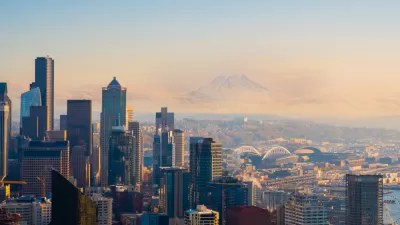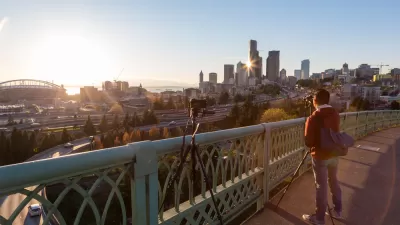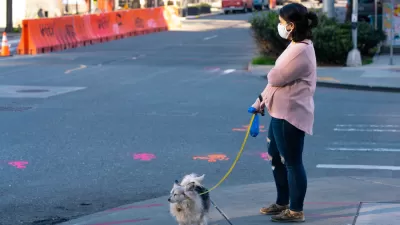Ryan Packer argues that Seattle could do more to improve its retail districts by updating its building codes to encourage dense, welcoming shopping districts.
Brick and mortar retailer stores flourish in areas where other similar stores are plentiful. Empty buildings, long stretches of brick or concrete walls, and even large retailers with one entrance can create streets that feel dead. Flourishing retail districts don't just benefit shop owners, they give cities their vibrancy, encourage walking and make for interesting places to visit.
In a piece for The Urbanist, Ryan Packer suggests three strategies to encourage these lively neighborhoods:
- Giving extra floor area in exchange for locating the large-footprint retail uses away from street frontages;
- Encouraging smaller, ground floor retail units
- Requiring accessibility and higher activity uses at primary street corners.
Even featureless blocks don't have to feel abandoned. "Some practical solutions to improving these spaces include things like ground floor transparency (few blank walls), adding faux building entrances, painting murals on walls, and reducing maximum building widths," Packer adds.
FULL STORY: Encouraging Better Seattle Retail Districts

Study: Maui’s Plan to Convert Vacation Rentals to Long-Term Housing Could Cause Nearly $1 Billion Economic Loss
The plan would reduce visitor accommodation by 25,% resulting in 1,900 jobs lost.

North Texas Transit Leaders Tout Benefits of TOD for Growing Region
At a summit focused on transit-oriented development, policymakers discussed how North Texas’ expanded light rail system can serve as a tool for economic growth.

Using Old Oil and Gas Wells for Green Energy Storage
Penn State researchers have found that repurposing abandoned oil and gas wells for geothermal-assisted compressed-air energy storage can boost efficiency, reduce environmental risks, and support clean energy and job transitions.

Private Donations Propel Early Restoration of Palisades Playground
Los Angeles has secured over $1.3 million in private funding to restore the Pacific Palisades playground months ahead of schedule, creating a modern, accessible space that supports community healing after recent wildfires.

From Blight to Benefit: Early Results From California’s Equitable Cleanup Program
The Equitable Community Revitalization Grant (ECRG) program is reshaping brownfield redevelopment by prioritizing projects in low-income and environmental justice communities, emphasizing equity, transparency, and community benefits.

Planting Relief: Tackling Las Vegas Heat One Tree at a Time
Nevada Plants, a Las Vegas-based nonprofit, is combating the city’s extreme urban heat by giving away trees to residents in underserved neighborhoods, promoting shade, sustainability, and community health.
Urban Design for Planners 1: Software Tools
This six-course series explores essential urban design concepts using open source software and equips planners with the tools they need to participate fully in the urban design process.
Planning for Universal Design
Learn the tools for implementing Universal Design in planning regulations.
Ascent Environmental
Borough of Carlisle
Institute for Housing and Urban Development Studies (IHS)
City of Grandview
Harvard GSD Executive Education
Toledo-Lucas County Plan Commissions
Salt Lake City
NYU Wagner Graduate School of Public Service





























